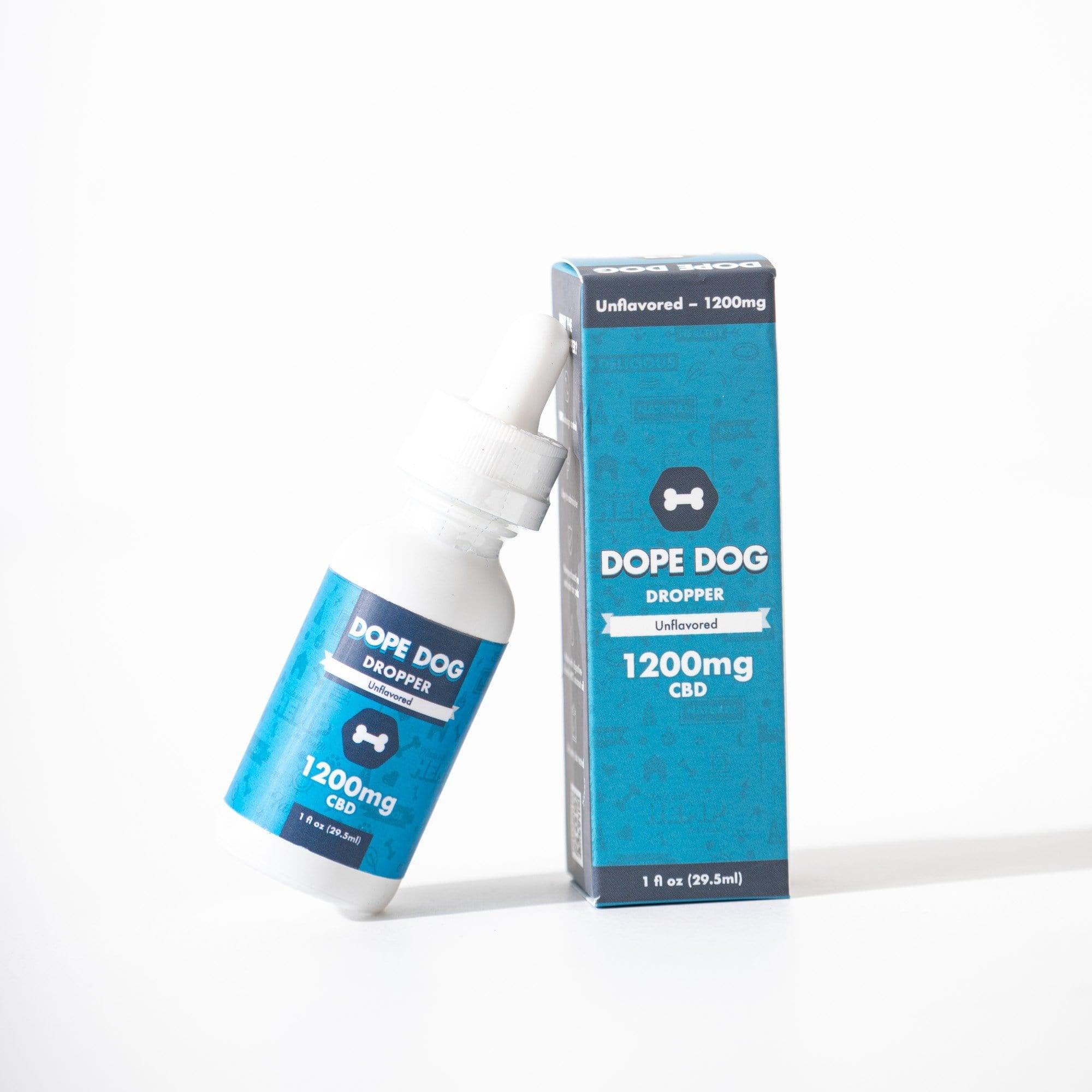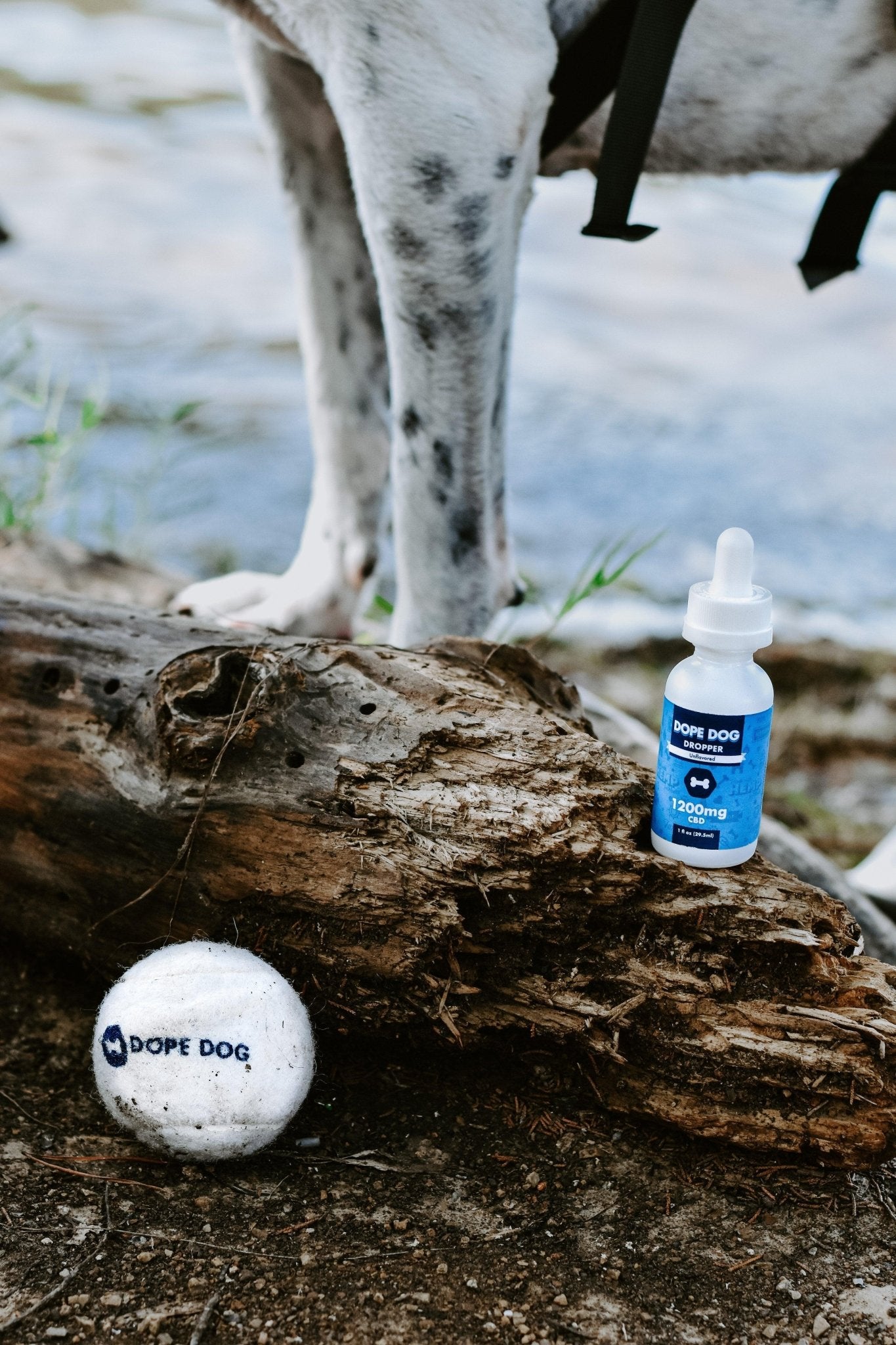As pet owners, we strive to keep our furry friends healthy and happy. However, there are times when unexpected health issues arise, leaving us concerned and searching for answers. One such concern that can cause alarm is when we notice our dogs bleeding from their private parts. This is not a situation to be taken lightly, as it could be a sign of an underlying health condition that requires immediate attention.
In this blog post, we will explore the common causes of genital bleeding in dogs, the signs and symptoms to look out for, when to seek veterinary care, and how to prevent such issues from occurring in the first place. Understanding canine genital health is crucial for every dog owner, so let's dive in and find out why our dogs may be experiencing this alarming symptom.
Love your pup every day the easy way with Dope Dog. Check out their full line of pet-safe CBD products today. Shop now!
Understanding Canine Genital Health

Canine genital health is a vital component of our furry companions' overall well-being. A grasp of their reproductive system's anatomy and regular functioning is essential for identifying potential issues and delivering appropriate care. Here are some essential points to keep in mind: Dogs, like many mammals, possess a complex reproductive system, with males having a penis and testicles, and females featuring a vulva, vagina, and uterus.
Acquainting yourself with this basic anatomy aids in recognizing any anomalies or variations that may arise. Female dogs undergo routine reproductive cycles, known as heat or estrus cycles, characterized by hormonal changes that can result in vulvar bleeding or discharge. Familiarity with these cycle stages helps distinguish normal bleeding from the abnormal.
Additionally, understanding that some degree of genital discharge is normal for both male and female dogs, with variations based on factors like age, reproductive status, and overall health, is crucial. However, any excessive or unusual bleeding warrants further investigation. Hormones exert significant influence over canine genital health. Hormonal fluctuations can induce changes within the reproductive system, including bleeding. It's essential to be mindful of hormonal conditions such as pyometra (uterine infection) or hormonal imbalances, which might contribute to genital bleeding.
By developing a foundational comprehension of canine genital health, we can navigate potential causes and treatments for genital bleeding more effectively. In the next section, we'll delve into common reasons for this concerning symptoms.
Related: Can Dogs Eat Grit?
Common Causes of Genital Bleeding in Dogs

Genital bleeding in dogs can be caused by various factors, ranging from mild to severe. Understanding the common causes can help us identify and address the underlying issue promptly. Here are some potential reasons why your dog may be experiencing genital bleeding:
- Urinary Tract Infections (UTIs): UTIs are a common cause of genital bleeding in dogs. Bacterial infections in the urinary tract can lead to inflammation and irritation, resulting in blood in the urine. Other symptoms may include frequent urination, straining, and discomfort during urination.
- Injuries or Trauma: Trauma to the genital area can cause bleeding in dogs. This can occur due to accidents, rough play, or even aggressive mating attempts. Injuries may range from minor cuts or abrasions to more severe damage to the reproductive organs. It's crucial to assess the situation and seek veterinary care if necessary.
- Bladder Stones: Bladder stones, also known as uroliths, can cause bleeding in the urinary tract. These mineral deposits can irritate the bladder lining, leading to inflammation and blood in the urine. Additional symptoms may include frequent urination, straining, and discomfort.
- Tumors or Cancer: Unfortunately, tumors or cancerous growths in the reproductive system can also lead to genital bleeding in dogs. These growths can be benign or malignant and may affect both males and females. It's essential to have any unusual lumps, bumps, or bleeding evaluated by a veterinarian promptly.
- Reproductive Issues: For intact females, reproductive issues such as a uterine infection (pyometra) or complications during pregnancy or labor can cause genital bleeding. Additionally, male dogs may experience bleeding or discharge from the penis due to prostatic disease or other reproductive disorders. These conditions require immediate veterinary attention.
It's important to remember that this list is not exhaustive, and there may be other less common causes of genital bleeding in dogs. If you notice any signs of bleeding from your dog's private parts, it's crucial to consult with a veterinarian for a proper diagnosis and appropriate treatment. In the next section, we will explore the signs and symptoms to look out for when it comes to genital bleeding in dogs.
Related: Can Dogs Eat Sesame Seeds?
Recognizing Signs and Symptoms

Recognizing the signs and symptoms of genital bleeding in dogs is essential for prompt intervention and appropriate veterinary care. Here are some common indicators to look out for:
- Excessive Licking: Dogs may excessively lick their genital area when experiencing discomfort or irritation. If you notice your dog constantly grooming their private parts, it could be a sign of genital bleeding or an underlying issue.
- Difficulty Urinating: Dogs may exhibit difficulty or discomfort during urination when experiencing genital bleeding. This can include straining to urinate, frequent attempts to urinate with little output, or even blood in the urine itself.
- Changes in Behavior: Genital bleeding can cause changes in a dog's behavior. They may appear restless, agitated, or exhibit signs of pain. Some dogs may become more withdrawn or exhibit signs of discomfort, such as reluctance to sit or lie down.
- Physical Changes in the Genital Area: Visual examination of the genital area may reveal physical changes or abnormalities. These can include swelling, redness, sores, or visible blood. It's important to note any changes and report them to your veterinarian.
- Other Associated Symptoms: Depending on the underlying cause, dogs experiencing genital bleeding may also exhibit additional symptoms. These can include lethargy, loss of appetite, weight loss, increased thirst, or changes in their overall demeanor.
It's crucial to remember that these signs and symptoms may vary depending on the underlying cause and the severity of the condition. If you notice any of these indicators, it's recommended to seek veterinary care for a thorough examination and accurate diagnosis.
In the next section, we will discuss when it's appropriate to seek veterinary care for genital bleeding in dogs.
Related: Can Dogs Eat Eggplant?
When to Seek Veterinary Care

Recognizing when to seek veterinary care for genital bleeding in dogs is vital for timely diagnosis and proper treatment. Several guidelines can help determine when consulting a veterinarian is necessary. In emergency situations where severe bleeding persists, causing distress, or resulting from significant genital injuries, immediate veterinary attention is crucial to prevent further complications or life-threatening situations.
For persistent or recurring mild bleeding, it's advisable to consult a vet to identify underlying causes and prevent complications. If your dog displays additional concerning symptoms alongside genital bleeding, such as difficulty urinating, behavioral changes, appetite loss, lethargy, or other unusual signs, veterinary care is recommended. For first-time occurrences of genital bleeding or if your dog belongs to a breed prone to reproductive or urinary issues, it's best to have them evaluated by a vet to ensure a proper diagnosis and rule out serious underlying conditions.
Remember, trust your instincts as a pet owner and seek veterinary advice if you have any concerns about your dog's genital bleeding. In the next section, we will discuss what to expect when seeking veterinary care for this issue.
Related: Can Dogs Eat Strawberries?
Preventing Genital Bleeding in Dogs

To prevent genital bleeding in dogs, adopt a proactive approach to their well-being. Regular vet check-ups are crucial for early issue detection and preventive care, encompassing vaccinations and parasite control. For females in heat, maintain proper genital hygiene to avert irritation and trauma. Ensure a balanced diet and exercise regimen, consulting your vet for tailored guidance. Spaying or neutering can mitigate specific risks. Also, Monitor your dog's behavior and genital area closely, promptly seeking vet care if you observe concerning symptoms. While these steps mitigate risks, consult your vet for personalized advice.
In summary, proactive care significantly reduces the likelihood of genital bleeding, promoting your dog's overall health and well-being.
Are you looking for a worry-free way to safely dose your dog? Dope Dog has treats that make it easier than ever to offer your CBD. Shop today!
Follow us on our Socials - Pinterest | Instagram | Youtube | Tiktok | Facebook

![Why is My Dog's Ear Swollen? [MUST KNOW!]](http://dope.dog/cdn/shop/articles/tim-higham-QxDXORRktWE-unsplash-555717.jpg?v=1697236049&width=1536)
















